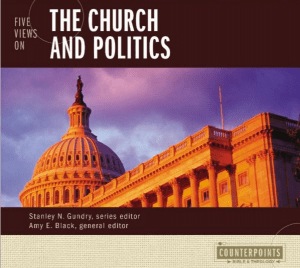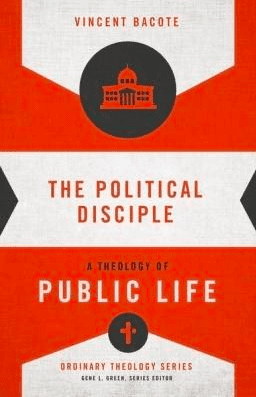Gay Marriage and the Law
By David W. Opderbeck. David Opderbeck is Professor of Law at Seton Hall University Law School and is a doctoral candidate in Philosophical Theology at the University of Nottingham. He blogs at Through a Glass Darkly.
As everyone knows, the Supreme Court has finally announced its decisions in this term’s “gay marriage” cases, Hollingsworth v. Perry and United States v. Windsor. This is the first of five posts I will offer on these cases. In this first post, I’ll try to provide a peek at the legal machinery underlying the Hollingsworth case. In the second post, I’ll do the same for the Windsor case. In the third post, I’ll offer some thoughts on the question of Christian participation in American government and “State’s rights.” In a fourth post, I’ll discuss some differences among Christians who support traditional marriage, particularly between Evangelicals and Catholics. In the final post, I’ll volunteer some suggestions on how Christians – the Church – should respond to these two cases. Of course, all of these are my own thoughts, not necessarily those of any educational institution or ecclesial body to which I belong.
Part I: The Man Behind the Curtain in Hollingsworth
An editorial in the March 24, 2013 Wall Street Journal previewed the oral arguments in Windsor and Hollingsworth. The WSJ argued that the Court should refrain from offering any definition of “marriage” and should leave that issue to the States. According to the WSJ editorial,
Over time, through popular consent, the law comes to reflect an evolving social consensus. On gay marriage, state by state, election by election, voters are extending to gay and lesbian couples the same rights and responsibilities that pertain to a union between a man and a woman. Those choices are the pith of self-government, even if fair-minded voters in other states preserve the traditional meaning.
A bird’s-eye view of the opinions suggests that this is precisely the approach the majorities in both cases took. It might disappoint some readers to know that the Court did not attempt to define “marriage.” Instead, the legal machinery of these cases concerns the Rube Goldberg-esque contraptions of federal court jurisdiction, the authority of State governments in relation to the Federal government and the U.S. Constitution, and the standing of a party to bring a lawsuit. The Court manipulated those knobs and levers to direct this contentious issue back to the States. Some commentators have suggested that the results in these cases were deeply consistent with democratic governance in a federal system.
Or maybe not.
The workings of federalism represent more than two centuries of highly contested jurisprudence that concern two principles we all learned (or should have learned!) in High School Civics class: (1) under the U.S. Constitution, the United States is a federal system in which certain powers and authorities reside in a central federal government, certain powers and authorities are reserved to the several State governments, and certain powers and authorities overlap between federal and State governments; and (2) the U.S. Constitution establishes a separation of powers, or “checks and balances,” among the Executive, Legislative, and Judicial branches of government.
In a nutshell, the holding in Hollingsworth is that the sponsors of a ballot initiative cannot pursue an appeal of a court decision invalidating that initiative if the Executive branch officials charged with enforcing and defending the initiative choose not to defend it either in the lower court or on appeal. The majority opinion was delivered by Chief Justice Roberts, joined by Justices Scalia, Ginsburg, Breyer, and Kagan – a seemingly odd coalition of conservatives and liberals.
The Hollingsworth majority opinion refers to the fundamentally limited role of the judicial branch, which is to decide “cases and controversies.” Social conservatives often complain that courts “legislate from the bench” by going beyond the particular disputes before them to announce broadly applicable rules. To focus on the “case or controversy” requirement therefore usually represents a “conservative” judicial move.
If the party charged with defending a law in court – ordinarily the Executive branch — chooses not to do so, generally there is no “case or controversy” merely because individual legislators or citizens disagree with the Executive’s decision. The Hollingsworth majority noted that “[w]e have never before upheld the standing of a private party to defend the constitutionality of a state statute when state officials have chosen not to do so.”
There are many reasons an Executive might decline to defend a statute that is alleged to be unconstitutional. Perhaps there is little likelihood of success or the Executive genuinely believes the statute violates a fundamental constitutional principle. Perhaps the letter of the law mandates an extremely harsh and clearly unjust result.
There are also many reasons an Executive might choose not to enforce a statute that is on the books. For example, there is a long tradition of “prosecutorial discretion” by which officers under the control of the Executive – such as police officers and prosecutors — may properly decline to enforce the law literally. If you have ever been stopped for speeding and let off with a warning, or charged with a serious traffic offense and appeared in municipal court to plead to a lesser offense, you know how this works, and no doubt you are grateful. (I know I am!)
It seems right that, ordinarily, circumstances like this should be left to the longer-term political process. The people who supported the original statute can always elect a different Executive who promises to enforce and defend the statute to its fullest extent. If you really want a tough municipal judge who will unbendingly enforce all the traffic laws without plea bargaining, you can elect one (or elect officials who will appoint one). It would be troubling if such tensions between the Legislative and Executive branches were routinely adjudicated by the Courts at the request of individual legislators or citizens.
Social conservatives, however, claim that in Hollingsworth the Court facilitated a more extreme anti-democratic move by California’s Executive branch. Indeed, some of the reasons an Executive may refuse to enforce a statute may be nefarious – perhaps the Executive simply disagrees with the Legislature’s judgment but lacked the will to veto the legislation, or is holding enforcement hostage to some other political goal, or has been corrupted by bribes. Such reasons indeed raise troubling questions about the concept of the rule of law. If the Executive routinely refuses to carry out and defend the laws enacted by the people through their elected representatives, the threat of tyranny looms.
Perhaps more significantly, the gay marriage law at issue in Hollingsworth came about through California’s somewhat unique ballot initiative system, whereby citizens can vote directly to amend the State Constitution or enact a statute on the basis of proposals drafted and supported by citizen-proponents rather than by elected representatives. The original challenge to the law – which was in fact an amendment to California’s Constitution – was raised in federal court under the U.S. Constitution. It seems troubling that a State’s Governor or Attorney General could refuse to enforce or defend a federal challenge to a State Constitutional amendment enacted directly by the State’s citizens through a referendum. And it seems odd that the citizen-proponents of the initiative, a readily identifiable and discrete group, could not then step in and pursue the defense. This is why the dissenters in Hollingsworth – the equally odd coalition of Justices Kennedy, Thomas, Alito and Sotomayor – concluded that the majority opinion denied “the essence of democracy,” which they expressed as follows: “that the right to make law rests in the people and flows to the government, and not the other way around.”
So who was right in Hollingsworth, the majority or the dissenters? I hope this brief review suggests that the technical legal issue on which the case was decided by the Supreme Court is clear as mud. Given the relative novelty of California’s ballot initiative process, the superheated local and national politics of the gay marriage issue, and the resulting tangled mass of federalism and separation of powers principles, there are arguments to be made on both sides concerning the effect of this case on the rule of law. When you have Justices Roberts and Scalia on one side of a federalism / separation of powers case and Justices Thomas and Alito on the other side, it’s fair to conclude that the procedural history was an intractable mess.











